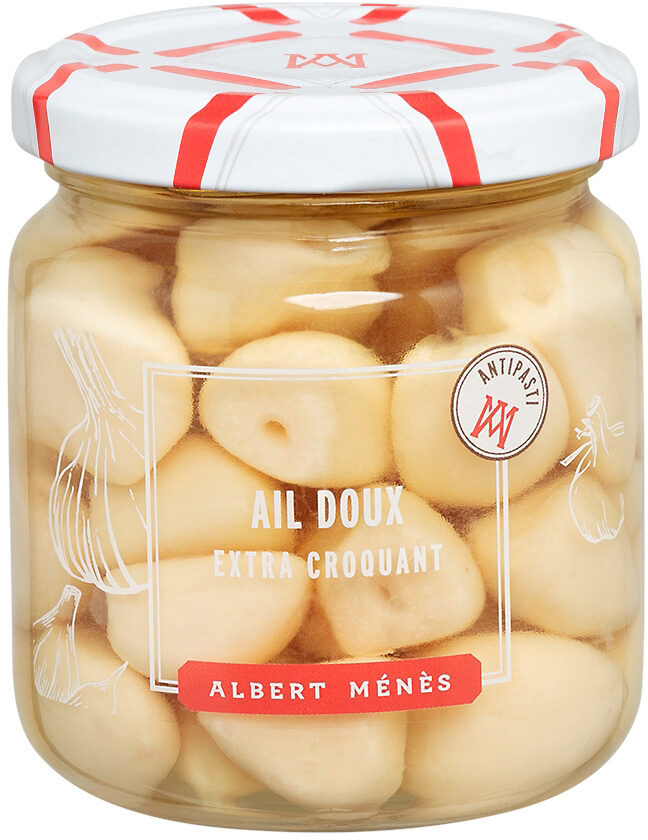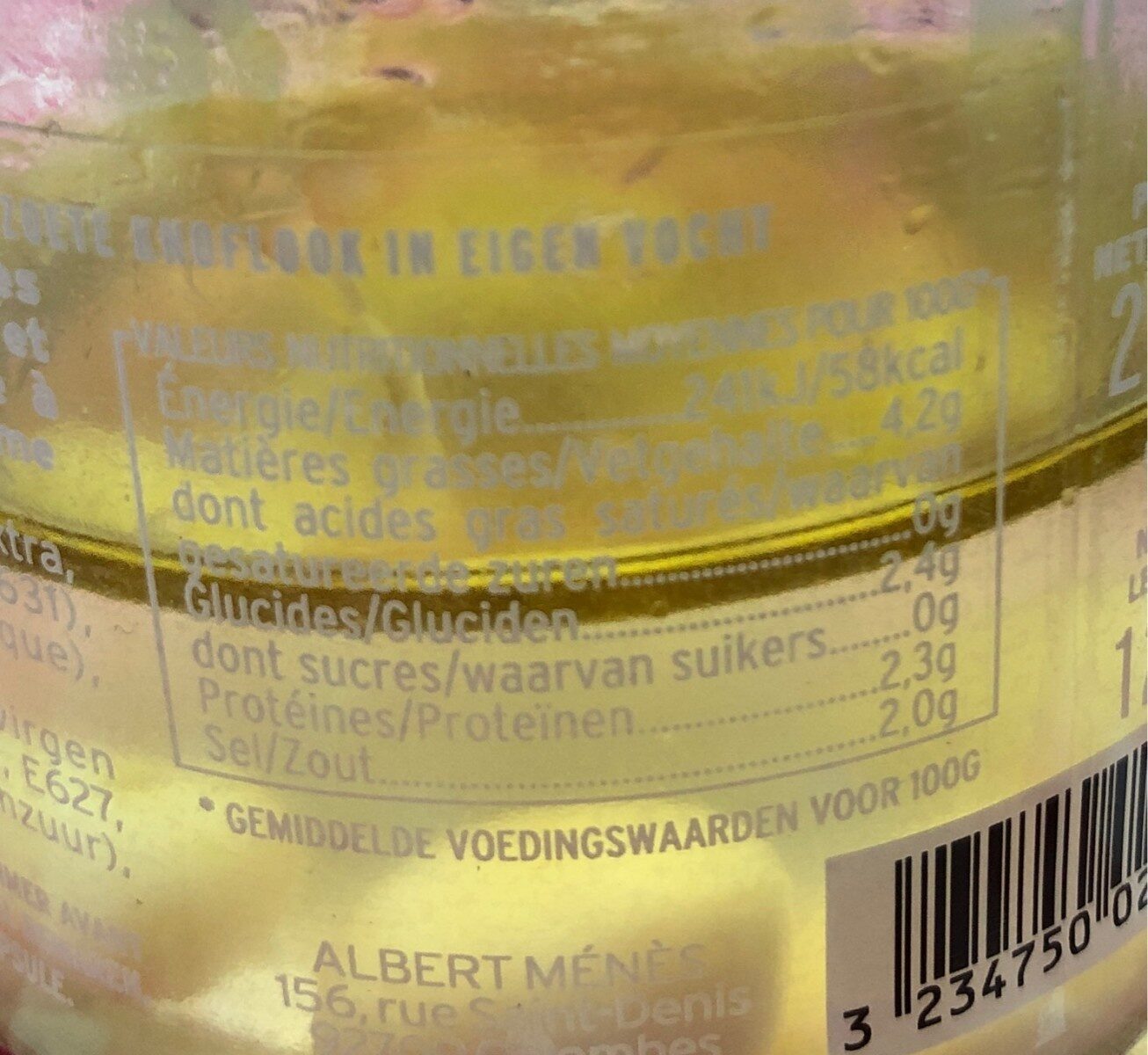Ail doux au naturel - Albert Ménès - 120 g
This product page is not complete. You can help to complete it by editing it and adding more data from the photos we have, or by taking more photos using the app for Android or iPhone/iPad. Thank you!
×
Barcode: 3234750023126 (EAN / EAN-13)
Common name: Ail Doux au Naturel 120 g
Quantity: 120 g
Brands: Albert Ménès
Categories: Plant-based foods and beverages, Plant-based foods, Fruits and vegetables based foods, Condiments, Vegetables based foods, Culinary plants, Garlic and their products, Groceries
Labels, certifications, awards:
Green Dot
Countries where sold: France, Switzerland
Matching with your preferences
Environment
Packaging
Transportation
Report a problem
Data sources
Product added on by sebleouf
Last edit of product page on by packbot.
Product page also edited by beniben, date-limite-app, kiliweb, openfoodfacts-contributors, org-albert-menes, stephane, yuka.N-xgMceiJt15PPTVjL0S7WeYTb_bOeEEB24Pog, yuka.VGFzRkxMNE5vTjAwcXNjQXdES0lwKzVveEptVmUxMjFFOGdNSWc9PQ.











